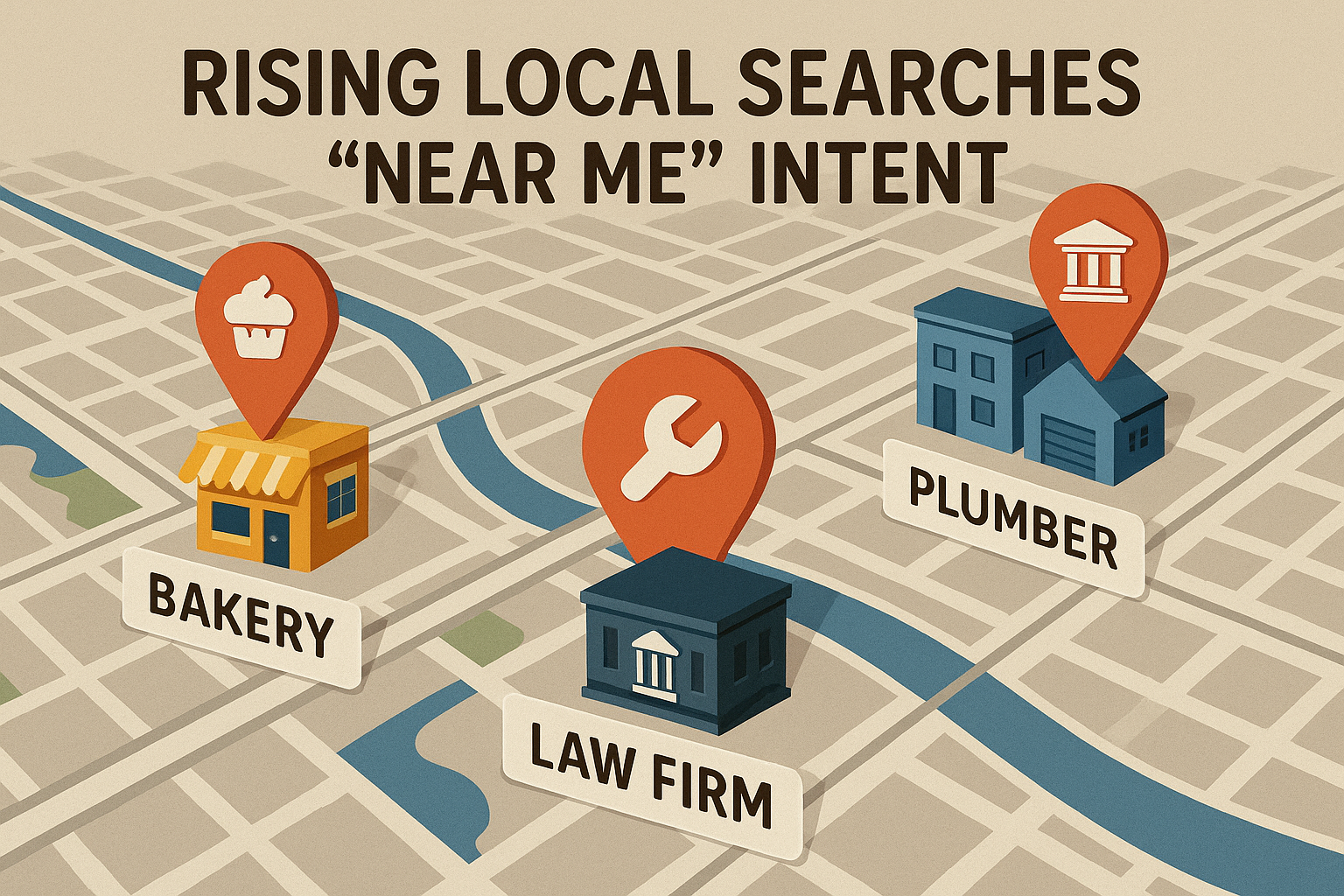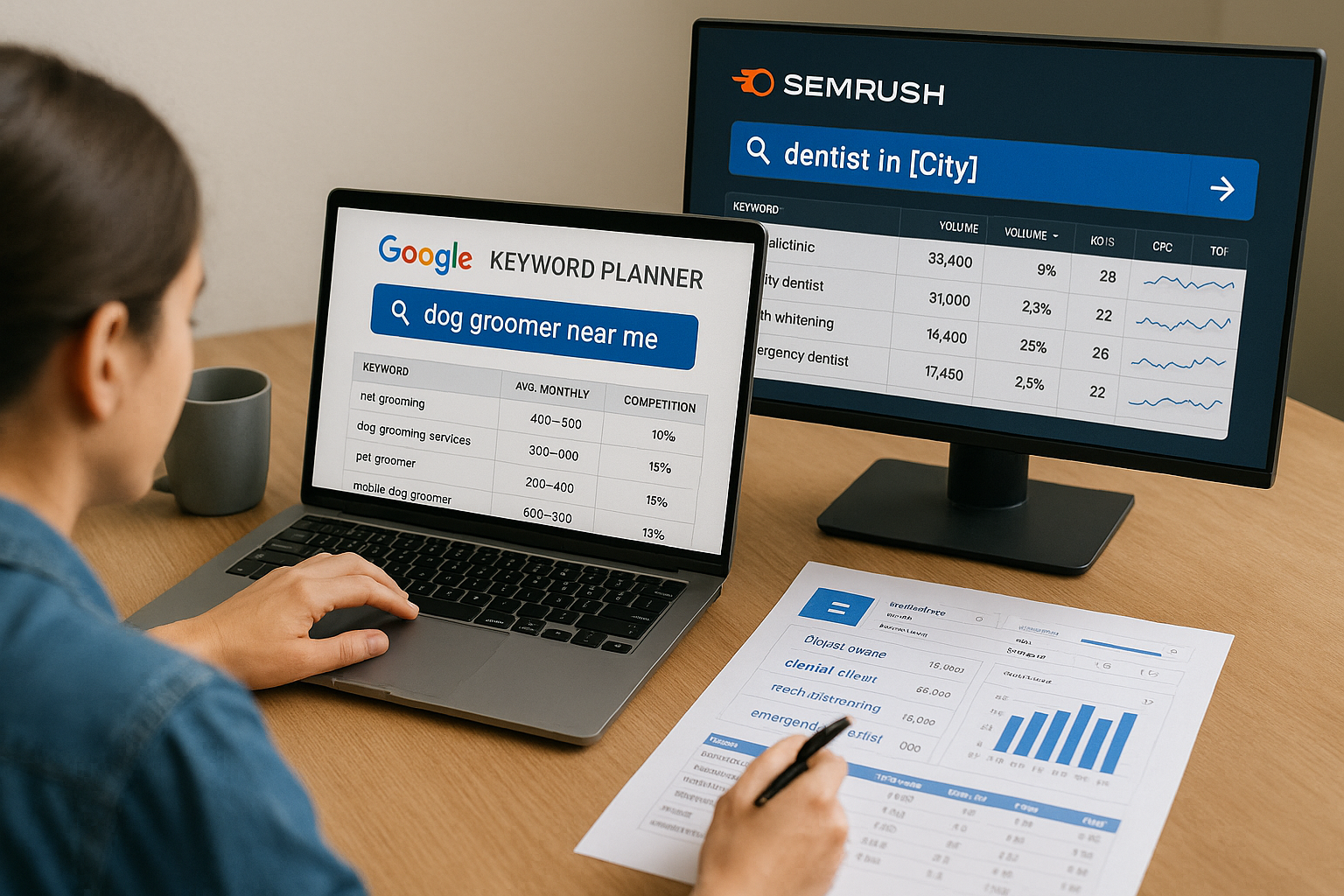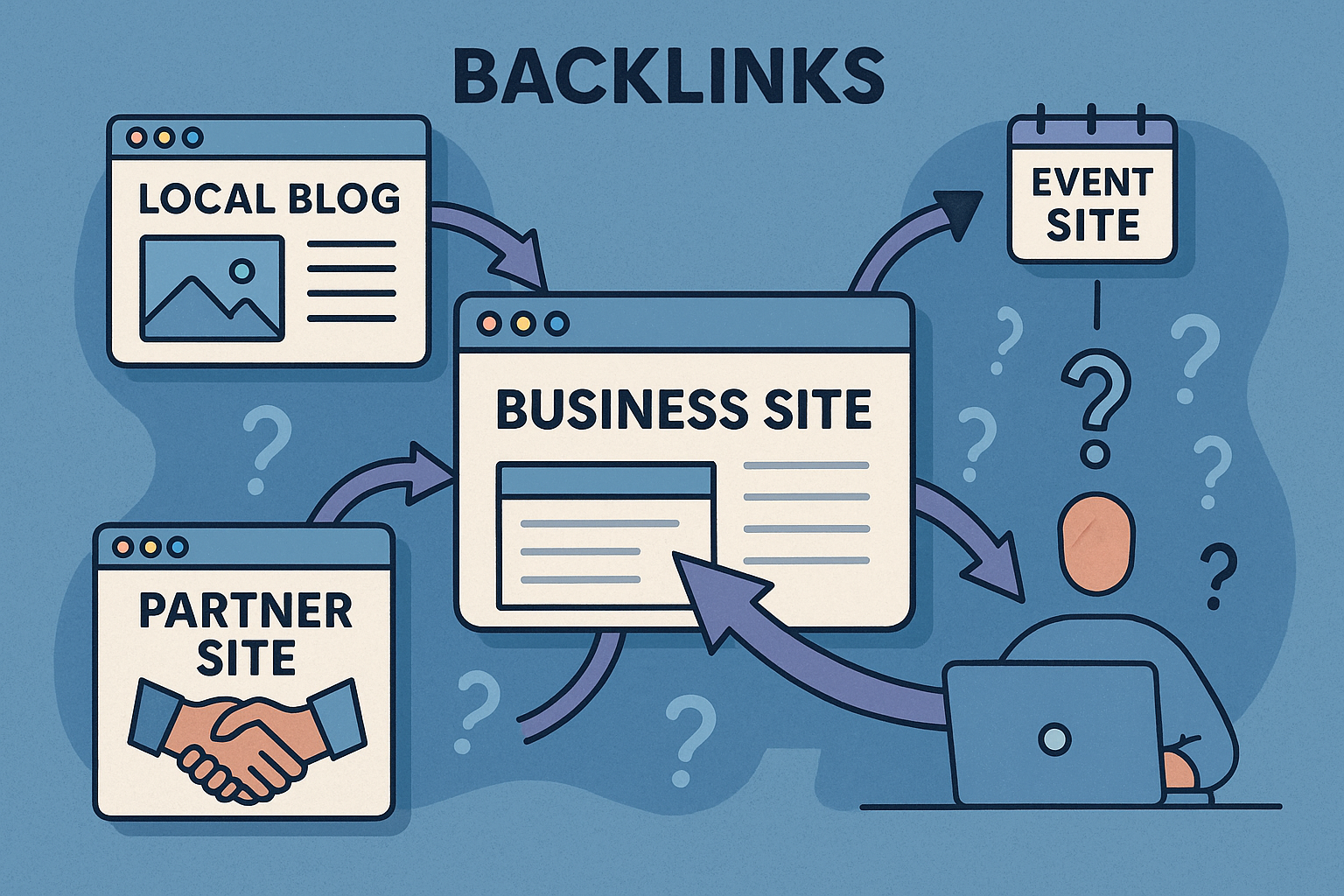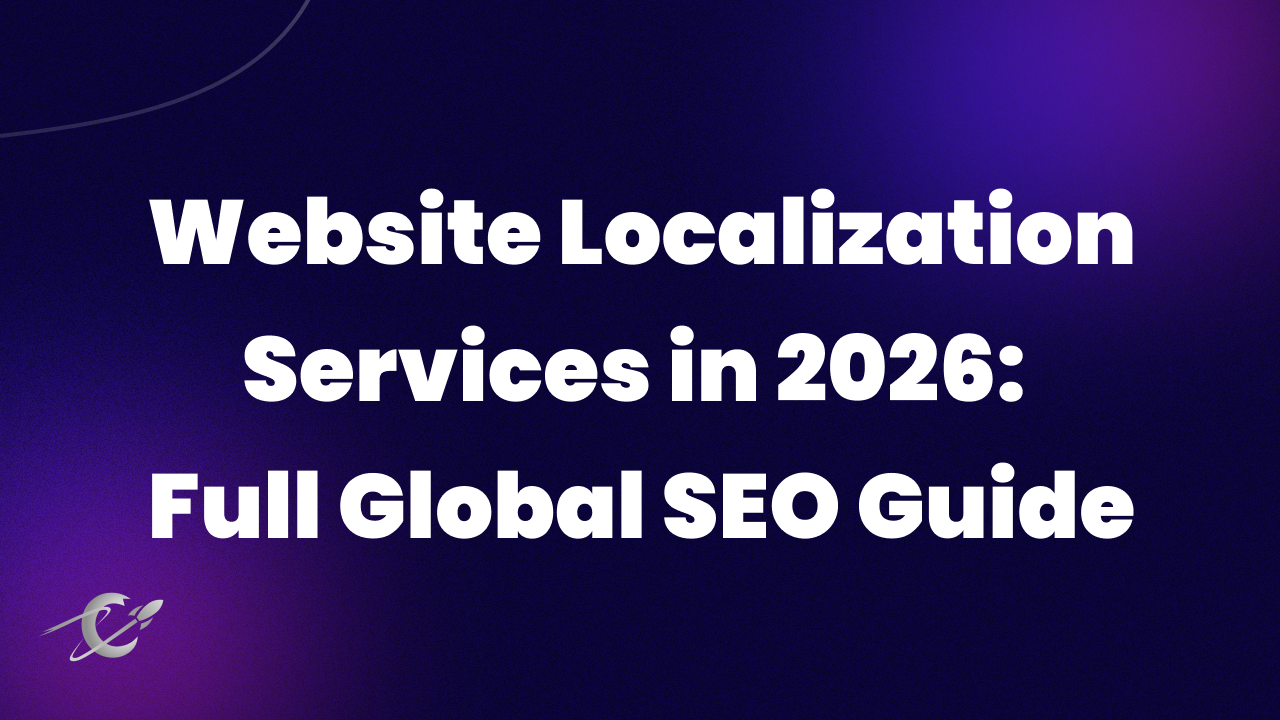AI SEO Agency: The Complete Guide to SEO, GEO & AEO
Ballistic Content Team

In today's digital landscape, local search visibility is no longer a competitive edge—it’s a business necessity. "Near me" searches have grown by over 500% in recent years, reflecting the rise in location-specific queries by users looking for services nearby. Whether you run a family-owned bakery, a boutique law office, or a neighborhood plumbing service, if your business isn't showing up in these hyperlocal search results, you’re likely missing out on high-intent traffic and revenue.
Local SEO (Search Engine Optimization) helps small businesses compete with larger chains by putting them front and center when potential customers are actively looking for their services. And the best part? Local SEO levels the playing field. With the right approach, even a solo entrepreneur can outrank national brands in local results.
What makes local SEO so powerful is how it connects your business directly with high-intent consumers. According to a BrightLocal-based analysis, 78% of location-based mobile searches result in an offline purchase—meaning users who search on their phones for businesses nearby are most often ready to buy, not just browse.

When someone types “best Thai food in Richmond” or “emergency plumber near me,” they’re not casually browsing—they’re ready to act. Optimizing for these searches can turn local visibility into real foot traffic and revenue.
But winning the local SEO game requires more than just a Google Business Profile and a few five-star reviews. You need a comprehensive, strategic, and up-to-date checklist tailored to the evolving local search landscape.
This guide offers exactly that. Designed specifically for small business owners, this local SEO checklist walks you through every crucial step—from optimizing your online presence and collecting local backlinks, to building citations and monitoring performance. Backed by data, real-world case studies, and actionable tactics, it's everything you need to boost your visibility in 2025 and beyond.
If there’s one place every small business should start with local SEO, it’s Google Business Profile (formerly Google My Business). Why? Because nearly 64% of consumers use Google Business Profiles to find contact details for local businesses (source: BrightLocal). It’s your digital storefront on Google Maps and local search—and it’s free.
First things first: you need to claim your listing at Google Business Profile Manager. If your business is already listed, you can request access. If not, create a new listing by entering your business name, address, and contact details.
Once submitted, Google will ask you to verify the listing—typically by mail with a verification postcard. This step ensures only legitimate business owners manage business listings and helps prevent fraudulent claims.
After verification, your next task is to complete your profile with as much detail as possible. This includes:
Be specific and detailed. If you're a dentist, list services like "teeth whitening," "dental implants," or "emergency dental care" to match what people in your area are searching for.
Visual content is a major trust signal for searchers—and Google. According to Google, businesses with photos receive 42% more requests for directions and 35% more click-throughs to their websites.
Add clear, high-resolution photos of your storefront, interiors, staff, products, and services. Showcase what makes your business unique. For example, a local florist might upload seasonal arrangements or behind-the-scenes bouquet prep.
Videos can add even more engagement. A 30-second intro from the business owner or a quick demo of your services can go a long way in humanizing your brand.
Staying active signals to both users and Google that your business is engaged. Use the "Posts" feature to share promotions, upcoming events, new product announcements, or blog articles. Each post can include a CTA (like “Call Now” or “Visit Website”) and links, making it a great channel to drive traffic.
The Q&A section is another often overlooked opportunity. Proactively add common customer questions and detailed answers—this not only helps customers but can improve your visibility for long-tail search queries.
Inside your dashboard, you’ll find "Insights"—a powerful analytics feature showing how people find your profile, what actions they take, and how you stack up against similar businesses.
Are most people calling you after viewing your profile? Are your photos getting fewer views than your competitors? These insights can shape your content strategy and help refine your listing for better performance.
Local SEO success begins with understanding what your customers are actually searching for. And that’s where local keyword research comes in. Unlike traditional SEO, where broad keywords are the norm, local SEO zeroes in on specific terms tied to geography, intent, and service type.
If you’re a pet groomer in Austin, your potential customers aren’t just searching “pet grooming.” They’re looking for “mobile pet groomer in Austin” or “best dog grooming near Zilker Park.”
Every keyword carries a different intent, and for small businesses, it’s crucial to target keywords with transactional or commercial intent. These are searches that show a user is ready to take action—like “buy,” “near me,” “open now,” or “book today.”
For instance:
Focus on long-tail keywords with specific modifiers tied to location, service, or quality. These tend to have lower competition and higher conversion rates.
Several tools can help you uncover valuable local keywords:
One smart tip is to review your competitors’ websites. What city- or service-specific phrases do they use in headings or page titles? These are likely the keywords they’re optimizing for—and you should too.
Instead of focusing on just one keyword, group related terms into “themes.” For example, a massage therapist in Denver might target:
These themes help build relevance across your pages and ensure you’re not just optimizing for a single term but covering variations and synonyms Google associates with your core topic.
Once you’ve gathered your keyword list, it’s time to assign them to relevant pages on your website. Here’s how to do it effectively:
Avoid keyword cannibalization—don’t have multiple pages competing for the same term. Each keyword (or theme) should have a clear home.
By mapping keywords strategically, you not only make it easier for Google to understand your site structure but also ensure your content speaks directly to what your audience is searching for—right down to their neighborhood.

Your website is more than just a digital brochure. For local SEO, it’s a vital hub that tells Google and customers exactly what you do, where you do it, and why you should be trusted. A well-optimized site makes it easier for search engines to rank your pages and for customers to take action—whether that’s calling you, visiting your store, or booking a service.
Today, over 60% of local searches happen on mobile devices. If your site isn’t mobile-friendly, you’re not just frustrating users—you’re losing rankings. Google’s algorithm now factors in Core Web Vitals: page load speed, visual stability, and interactivity.
To stay competitive:
You can test your site’s performance using Google’s PageSpeed Insights and identify specific issues to fix.
Every key service or location your business serves deserves its own page. This not only helps you rank for more keywords but also provides more relevant experiences for visitors.
A well-structured landing page should include:
And don’t forget to add structured data or schema markup—especially for LocalBusiness—so Google understands your page content even better.
Convenience matters. Small additions can dramatically boost conversions:
These elements don’t just improve usability—they can also boost your appearance in local search results with rich snippets and map integrations.
Every page on your site should have a unique title tag and meta description that reflect its content and target keywords. It’s the first thing users see in search results, so make it count.
Example:
Use headings (H2, H3, etc.) to structure your content and reinforce your keyword strategy. And always include your primary keyword in the page title, main heading, and the first paragraph.
With a properly optimized website, you're not just attracting traffic—you’re converting it. In the next section, we’ll break down how to build and optimize location-specific pages that help you dominate in each neighborhood or suburb you serve.
If your business serves more than one neighborhood, city, or region, having dedicated location pages is critical to your local SEO success. These pages tell search engines exactly where your services are available—and help potential customers find the most relevant information for their area.
Done right, location pages don’t just rank—they convert.
The rule of thumb is simple: if your business has a physical storefront that customers can visit, create a location page for each one. If you operate in multiple areas but don’t have physical locations (like a mobile dog groomer or in-home cleaning service), you’ll want service area pages tailored to each region.
Both types should include:
Each location page should feel like a mini-homepage for that specific area. It’s not just about keyword stuffing—you’re creating value for users who want to know if your service is relevant to them.
Here’s a checklist of what to include:
When creating location pages at scale, avoid using cookie-cutter content. Duplicate content across cities like “We provide plumbing in [City Name]” repeated 30 times won’t help your rankings—it may hurt them.
Instead:
Also, interlink location pages to one another or from a central "Locations" index page. This helps both users and search engines navigate your local service footprint.
By optimizing your location pages, you give your business the best chance to rank in hyperlocal searches and attract customers exactly where they’re looking. In the next section, we’ll dive into another pillar of local SEO: building consistent and authoritative citations.
In local SEO, consistency is key—especially when it comes to your business’s NAP (Name, Address, Phone Number). Even small discrepancies across online platforms can create confusion for both customers and search engines, ultimately hurting your visibility in local results.
Citations, which are online mentions of your business’s NAP on directories, websites, and social platforms, are vital trust signals for Google. They help establish your business’s legitimacy and improve your chances of appearing in the local pack and map listings.
Search engines use NAP data to verify the credibility and consistency of a business. If your Google Business Profile lists “Ballistic Design Studio, 123 Main Street, San Diego, CA,” but Yelp or Facebook shows “123 Main St.” or a different phone number, Google may flag your business as untrustworthy.
To avoid this:
Consistency boosts both SEO and customer experience, as visitors can rely on your contact details no matter where they find you.
There are thousands of citation sources, but not all carry equal weight. Focus on the most authoritative and relevant platforms, including:
In addition, consider reaching out to local chambers of commerce, business associations, or tourism boards—they often maintain directories that link to member businesses.
Manually managing citations across dozens of platforms can be overwhelming. Fortunately, several tools simplify the process:
Set up a recurring quarterly audit to catch any inconsistencies or duplicates that might slip through the cracks.
Online reviews are more than social proof—they’re a major local SEO ranking factor. According to BrightLocal’s Local Consumer Review Survey 2024, 87% of consumers used Google to evaluate local businesses, and 98% read reviews before choosing a service. Simply put, reviews can make or break a customer’s decision.
For small businesses competing in a local market, managing your online reputation isn’t optional—it’s a strategic advantage.
Not all review platforms are created equal. Start by identifying where your audience already leaves reviews and where your competitors have a strong presence. The big ones include:
Claim your business profile on each of these platforms, ensure your NAP details are consistent, and start engaging.
Most happy customers won’t leave a review unless asked—and often, it’s as simple as making it easy.
Here are effective tactics:
Avoid offering discounts or incentives in exchange for reviews—this can violate the terms of service on many platforms and may result in removed reviews or account suspension.
How you respond to reviews signals your brand's values and professionalism.
According to ReviewTrackers, 53% of customers expect businesses to respond to negative reviews within a week of posting (ReviewTrackers report, 2023). A prompt, thoughtful reply can often turn a critic into a loyal advocate.
Google has confirmed that review quantity, diversity, and velocity are all signals that impact local rankings. But beyond SEO, reviews offer real insights into your customer experience.
Managing your reviews effectively builds a reputation for quality, service, and trustworthiness—three pillars of local success.
Creating local content isn’t just about adding keywords like “near me” or naming your city—it’s about establishing your business as part of the community and building a site that speaks directly to your audience’s interests, problems, and daily lives. This is how local content fuels both trust and SEO visibility.
Blogging is a powerful content marketing tool when done with a local lens. Don’t just write generic advice—speak to your audience where they are.
Here are a few content ideas that resonate locally:
A remodeling company in Austin, for instance, might write a guide about the “Best Eco-Friendly Building Materials for Central Texas Homes,” embedding both geographic relevance and topical authority.
These types of posts help build topical relevance and can generate backlinks from other local blogs or news sources.
Covering local events shows customers—and Google—that your business is rooted in the community.
Examples include:
These stories not only create engagement but can generate coverage or mentions from local news outlets and community influencers.
Google prioritizes pages with video content, and consumers love it too. According to Wyzowl’s Video Marketing Survey 2024, 91% of people want to see more video content from brands.
Ideas for local video content:
Don’t overlook YouTube—it’s the world’s second-largest search engine and a powerful platform to expand your local footprint.
Collaboration with local micro-influencers (those with 1k–10k followers) can dramatically increase your exposure. Their audiences are usually highly engaged and trust their recommendations.
These relationships help boost brand awareness and can result in valuable backlinks and citations that support your local SEO.
Backlinks are a core ranking factor in SEO, and that includes local SEO. But not all backlinks are created equal. While national links from high-authority websites are valuable, local backlinks—links from websites in your geographic area—send strong signals to Google about your business’s relevance to that location.
When other trusted local sources link to your website, they’re essentially vouching for your business in the eyes of search engines.

Cross-promotion is a win-win strategy. Reach out to other businesses that serve the same customer base but aren’t direct competitors.
For example:
Offer to write guest blog posts, share each other’s promotions, or feature each other in a “local business spotlight” post. Each link builds your authority and helps you tap into a broader local audience.
Local bloggers and lifestyle influencers are also great partners. If they feature your business, they’re likely to link to your website or review it on their social platforms.
Sponsorship is more than community goodwill—it’s a legitimate SEO strategy. Local events, sports teams, school fundraisers, and non-profits often list sponsors on their websites with links.
Look for opportunities like:
Make sure your sponsorship includes a link to your site—and if you’re donating services, request a testimonial or case study as well.
If your business:
You’ve got a story worth sharing. Send press releases to local newspapers, online news outlets, community blogs, and even radio stations. These can result in valuable mentions, citations, and backlinks from highly authoritative local sources.
Use PR distribution tools like PRWeb, or target regional editors directly via email. Include links, photos, and quotes to increase your chances of being published.
Sometimes your business is mentioned on local websites but not linked. These are missed opportunities.
Use tools like:
Search for your business name and variations, then reach out to the site owners to request a proper hyperlink. These are often easy wins since the site already recognizes your business.
By building local backlinks strategically, you increase both your visibility and credibility. These efforts reinforce your presence in the community while supporting your SEO performance from the ground up.
Even the best local content and backlinks won’t drive results if your website isn’t technically sound. Technical SEO ensures that search engines can crawl, index, and interpret your site accurately. It's the foundation of all your optimization efforts—and when it's broken, so is your visibility.
Small businesses often overlook this part of local SEO, but it’s one of the easiest areas to fix with the right tools and strategy.
Before you do anything, make sure your site is verified in Google Search Console (GSC) and Google Analytics 4 (GA4). These tools are essential for tracking performance, diagnosing errors, and making data-driven improvements.
In GSC, pay close attention to:
Link GSC and GA4 to see how users interact with your site, where they’re coming from, and how they convert.
If Google can't crawl your site properly, it won’t rank your content—no matter how good it is.
Here’s what to check:
Use tools like Screaming Frog, Semrush Site Audit, or Seobility to run comprehensive technical audits. They flag issues that can often be fixed in minutes.
Ensure your XML sitemap includes all relevant pages (excluding things like thank-you pages or internal dashboards) and is submitted in GSC.
Schema markup is code that helps Google better understand the context of your content. For local SEO, using LocalBusiness structured data is essential.
Add schema tags to pages with:
This can lead to enhanced search results, such as rich snippets that show reviews, opening hours, or service areas. Use Google’s Structured Data Markup Helper or a WordPress plugin like Rank Math to simplify implementation.
Google uses HTTPS as a ranking signal—so make sure your site has a valid SSL certificate and is fully secure.
Performance also matters:
Track your performance using Google’s Core Web Vitals report in Search Console. This includes:
Improving these metrics not only boosts SEO but enhances the user experience—resulting in longer visits and higher conversions.
As smart speakers and mobile assistants like Siri, Google Assistant, and Alexa become more prevalent, voice search has fundamentally changed how people look for local businesses. According to Google, 58% of consumers have used voice search to find local business information. That number is only expected to grow.
If your local SEO strategy isn’t optimized for voice and mobile queries, you’re missing out on an audience that’s actively asking for services like yours.
Voice searches are more conversational and question-based than traditional typed queries. Instead of searching “best dentist Los Angeles,” users may ask, “Who’s the best-rated dentist near me open on Saturdays?”
This shift in search behavior calls for a more natural language approach to keyword targeting and content creation.
To accommodate voice search:
FAQs are particularly effective for voice search. Structuring your pages with question-and-answer formats makes it easier for Google to serve your content in featured snippets or voice results.
Incorporate question-based phrases that align with the customer journey. Use tools like AnswerThePublic, AlsoAsked, and Google’s People Also Ask box to find real user queries.
Create a dedicated FAQ section or incorporate micro-FAQs within service and location pages. Make sure answers are concise, relevant, and placed high on the page where Google’s crawler can find them easily.
Example:
This format boosts your chance of being selected for voice assistant responses and featured search snippets.
Voice search and featured snippets go hand in hand. To win them:
Also, be intentional about optimizing for “near me” searches. This means:
Search engines use your content and business data to determine proximity and relevance—critical components in voice results.
Local SEO isn’t a one-time project—it’s an ongoing process that requires regular measurement and fine-tuning. Tracking the right metrics not only shows you what’s working but also highlights opportunities to improve visibility, engagement, and conversions.
If you’re not measuring your performance, you’re essentially flying blind.
Start by defining your goals. Most local businesses want to:
Here are the essential metrics to monitor:
Establish monthly benchmarks so you can spot trends and pivot quickly when performance dips.
To simplify and centralize your tracking, use these tools:
These platforms help you understand what’s driving ROI and what’s holding you back.
Keep things organized with a monthly SEO report that includes:
Visual dashboards using tools like Looker Studio or Semrush Reports can make this process automated and client-ready if you’re an agency.
Social media may not directly affect your Google search rankings, but its influence on local SEO is undeniable. A strong presence on platforms like Instagram, Facebook, and LinkedIn helps build trust, boost brand awareness, drive traffic, and even attract backlinks—all of which support your broader SEO goals.
For small businesses, social media also offers an opportunity to show personality, connect with the local community, and promote content that reinforces geographic relevance.
Sharing content that highlights your ties to the community helps Google and your audience associate your brand with a specific area. You don’t need to reinvent your content calendar—just localize it.
Examples of local content to post:
This content builds authenticity, boosts engagement, and keeps your business top of mind when followers need your services.
Location tags on Instagram, Facebook, and LinkedIn posts increase visibility among nearby users. Whenever possible, tag your business location or a well-known landmark in your area to help your content appear in local feeds.
Local hashtags can also make your posts more discoverable. Try combinations like:
Keep a list of local hashtags and rotate them strategically across your content.
Building a local network on social media opens the door for valuable collaborations. Tagging, sharing, or jointly promoting content with nearby businesses expands your reach and positions you as part of the local ecosystem.
Ideas for collaboration:
Not only do these partnerships generate engagement, but they often lead to citations or links that benefit your local SEO.
Social media is where your brand voice comes to life. It helps extend your visibility beyond search and builds the kind of trust that encourages both clicks and foot traffic.
Even the most well-intentioned local SEO strategies can fall flat if common pitfalls go unnoticed. For small business owners, time and resources are often limited, so avoiding these mistakes can mean the difference between consistent local leads and digital obscurity.
Here’s what to look out for—and how to fix it.
Your Name, Address, and Phone number (NAP) should be identical everywhere it appears online. Small discrepancies like “123 Main Street” vs. “123 Main St.” can confuse search engines and reduce your visibility in local search.
Avoid this by:
Even small inconsistencies can erode your local trust signals in Google’s eyes.
Most local searches happen on smartphones—especially those involving immediate intent like finding directions or making a call. If your website isn’t optimized for mobile devices, visitors will bounce quickly, and rankings may suffer.
Make sure:
Mobile optimization isn’t just good UX—it’s local SEO insurance.
Publishing broad or national-level content may attract traffic, but it won’t help you rank locally. Google wants to serve users hyper-relevant results, especially for location-based searches.
To fix this:
Duplicate or overly generic pages across multiple locations can backfire, so ensure every location page is truly customized.
Avoiding these common missteps can save time, protect your SEO investment, and keep your visibility moving in the right direction.
If your business serves a specific geographic area—whether you have a storefront or travel to your customers—local SEO is essential. It helps you show up in Google’s local results and Maps when potential clients are looking for services in your area. This includes restaurants, home services, law offices, gyms, and just about any business with a defined service area.
Citations are online references to your business’s name, address, and phone number (NAP). They appear in directories, social profiles, and review sites. Consistent citations help Google validate your business information and improve local rankings, especially in map-based searches.
Ideally, you should update your profile whenever there’s a change in your business details—like new hours, services, or photos. Even if nothing changes, posting regularly (like weekly updates or offers) shows Google that your business is active, which can boost visibility.
You can certainly get started on your own, especially by following a checklist like the one in this article. However, technical tasks like schema implementation, competitor analysis, or multi-location SEO may benefit from professional help. Hiring an expert can accelerate results and prevent costly mistakes.
Local SEO is not an overnight strategy. Typically, small businesses start seeing measurable improvements within 3–6 months. That said, claiming and optimizing your Google Business Profile can sometimes result in quicker wins—especially for uncompetitive local niches.
Both play crucial roles but in different ways. Reviews influence how your business ranks in the local pack and how trustworthy you appear to customers. Backlinks, especially from local websites, help boost organic rankings and authority. Ideally, your strategy should include both to build trust and visibility.
Implementing local SEO may seem like a complex, multi-layered challenge—but for small businesses, it’s one of the highest-ROI strategies available today. From claiming your Google Business Profile to creating optimized location pages, collecting reviews, building citations, and securing local backlinks, each task helps carve out your place in the local search ecosystem.
But more than rankings and clicks, local SEO is about building credibility in your community, attracting high-intent customers, and standing out in a competitive digital landscape.
If you’re ready to turn this checklist into action and elevate your business's local visibility, don’t go it alone. Ballistic Design Studio specializes in helping small businesses dominate local search. From technical audits to content strategy and full-service local SEO, we’ve got the tools and expertise to help you grow.
Let us help you become the top result in your neighborhood—and the first business people call when they need your services.




Only valid for-